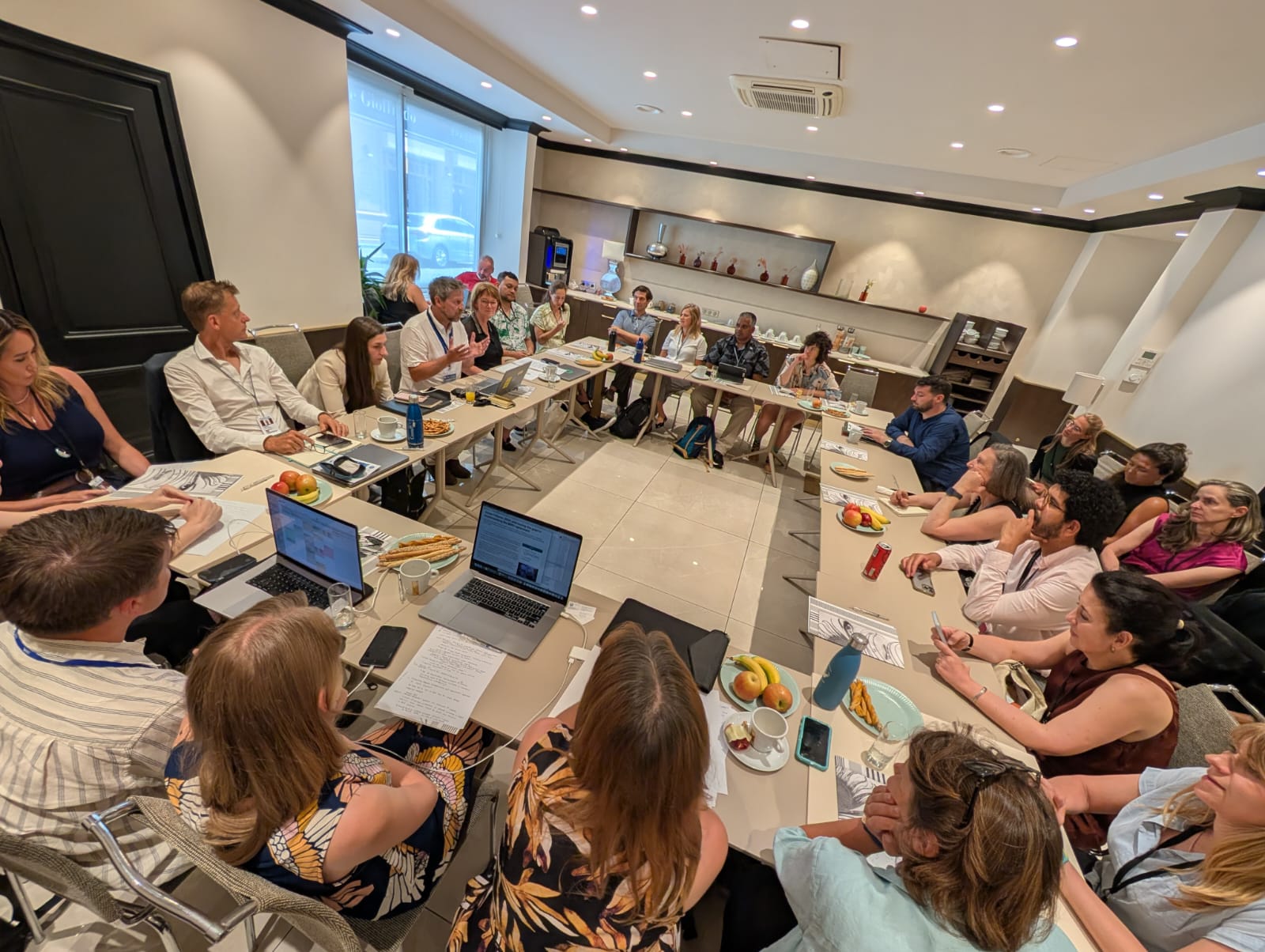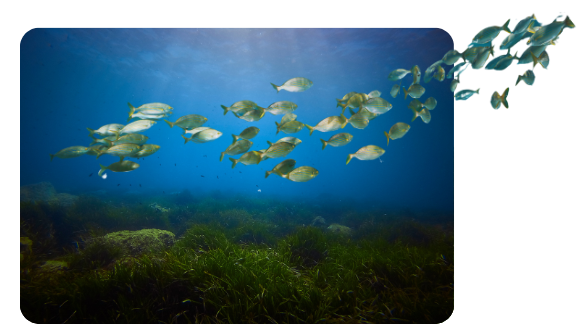Story
Challenges for High Seas Treaty implementation highlighted at UNOC3
12 June 2025
PML’s Prof Matt Frost chairs a roundtable of international experts as BBNJ ratifications gather momentum

Under the theme of “accelerating action and mobilising all actors” discussions at the third United Nations Ocean Conference (UNOC3) this week in Nice have reinforced the urgency of implementing the BBNJ Agreement – the legally-binding instrument designed to improve global management and conservation of the “high seas” – the vast areas of the Ocean beyond national jurisdiction.
Co-hosted by France and Costa Rica, the conference has brought together world leaders, scientists, ocean advocates and other experts (including a delegation from PML) to try and address the accelerating pace of ocean degradation and the need for coordinated international action.
Mounting focus has been placed on the BBNJ (formally known as the Agreement under the United Nations Convention on the Law of the Sea on the Conservation and Sustainable Use of Marine Biological Diversity of Areas Beyond National Jurisdiction) which requires the ratification of 60 countries to come into force.
Following a wave of ratifications – and commitments to do so in recent days (including from the UK Government) – more than 50 countries have now ratified the Treaty, with focus now shifting towards implementation and the challenges and opportunities this presents to the scientific community.
Alongside the EU Science Diplomacy Alliance, and the University of Bergen (UiB), Plymouth Marine Laboratory (PML) convened a roundtable of international experts today (June 12th) in Nice.
Chaired by Professor Matt Frost, PML’s Head of the International Office, and opened by Professor Lise Øvreås from the University of Bergen, the event provided a platform for quick-fire interventions from a range of actors including voices across the science, legal, finance and policy landscape.

Knowledge Gaps and Scientific Challenges
Professor Lisa Levin from Scripps Institution of Oceanography, University of California San Diego, highlighted fundamental gaps in ocean knowledge. “We have mapped only 30% of the ocean floor,” she noted, emphasising the geographical bias towards the northern hemisphere and the “massive uncertainty” under which Marine Protected Areas (MPAs) for BBNJ are being developed.
Professor Levin stressed the intergenerational nature of deep-sea conservation decisions: “If we damage deep sea organisms, it will last for centuries and generations.” She called for greater integration of Indigenous knowledge with western science, referencing the Alaskan “Two eyes seen” concept as a model for developing a unified vision.
Professor Murray Roberts from the University of Edinburgh identified three critical challenges for creating high seas MPAs: gaps in scientific knowledge, lack of regional capacity, and “institutional arrogance”.
“The deep sea is such a special place with unique features and if we don’t take these into account we’re going to make serious mistakes,” he warned, calling for greater interdisciplinary approaches that bring physics and ecology together.
Institutional and Governance Challenges
Professor Alice Vadrot from the University of Vienna outlined key institutional challenges, emphasising that scientific and technical bodies must include traditional knowledge alongside best available science while Ina Tessnow-von Wysocki from the Australian National Centre for Ocean Resources and Security highlighted regional disparities:
“The way we conduct science and the areas of Ocean we’re studying differ between regions. When we look at science today there is a clear bias towards the global North. BBNJ is an opportunity to challenge that.”
Policy Implementation Concerns
Ms. Angelique Pouponneau, Fellowship Director & Policy & Strategy Advisor for the 39-state Alliance of Small Island States (AOSIS), presented a policymaker’s perspective on implementation challenges. “Science needs to be responsive to the needs I have,” she stated, questioning how to de-politicise science and navigate situations where “there are people who don’t want to be driven by science.”
Pouponneau emphasised the geopolitical reality: “This will still be driven by global politics but the world right now is not in a good place. How can science help us navigate what is a very tense international political scene?”
Climate and Carbon Sequestration Opportunities
Dr. Niels Krabbe, researcher at the World Maritime University and former BBNJ negotiator, highlighted climate opportunities within the treaty framework. With 51 ratifications currently achieved, he noted “there is a window of opportunity” to promote climate aspects of BBNJ, emphasising that “ocean carbon is actually far more effective and important than we previously understood.”
For example, Krabbe advocated for understanding carbon sequestration hotspots when planning MPAs.
Regional Perspectives and Solutions
Associate Professor Awnesh Singh from the University of the South Pacific shared Pacific region innovations, including tools for biodiversity monitoring and marine management approaches that can be upscaled. “Science cannot be in the sidelines,” he emphasised, calling for investment in adaptive management approaches.
Dr. Natalya Gallo from the Norwegian Research Centre (NORCE) examined BBNJ through the lens of marine carbon dioxide removal (mCDR), noting that governance for mCDR is “really fragmented”. She also questioned how BBNJ would be integrated with other agreements.
Building Capacity for Implementation
Mr. Cosmin Chivu from the International Ocean Institute in Malta stressed the importance of avoiding past mistakes: “The BBNJ goals cannot be met without equipping all actors to act,” he said, advocating for a “no country left behind” principle through meaningful investment in people and partnerships.
Professor Carina Costa de Oliveira from the University of Brasilia highlighted the crucial role of harmonising international and national law, while Miriah M Russo Kelly from Southern Connecticut State University emphasised the human dimension:
“Even though people can’t see it or feel it, it’s vital they understand that they are part of it.”
Reflecting on proceedings Professor Frost said:
“This was a hugely valuable dialogue and highlights that the continued advancement of marine science is crucial to the treaty’s successful implementation. It also emphasises the need to incorporate a broad range of expertise from social science through law as well as hearing from Early Career Ocean Professionals, finance experts and representatives of community groups including Small Island Developing States.”
Related information
About BBNJ and UNOC3
The BBNJ Agreement requires ratification by 60 countries to enter into force and represents a landmark achievement in international ocean governance. UNOC3, running this week in Nice, France, brings together global stakeholders to accelerate ocean action and mobilise all actors in ocean conservation efforts.
Read also:
BBNJ Agreement | Agreement on Marine Biological Diversity of Areas beyond National Jurisdiction
